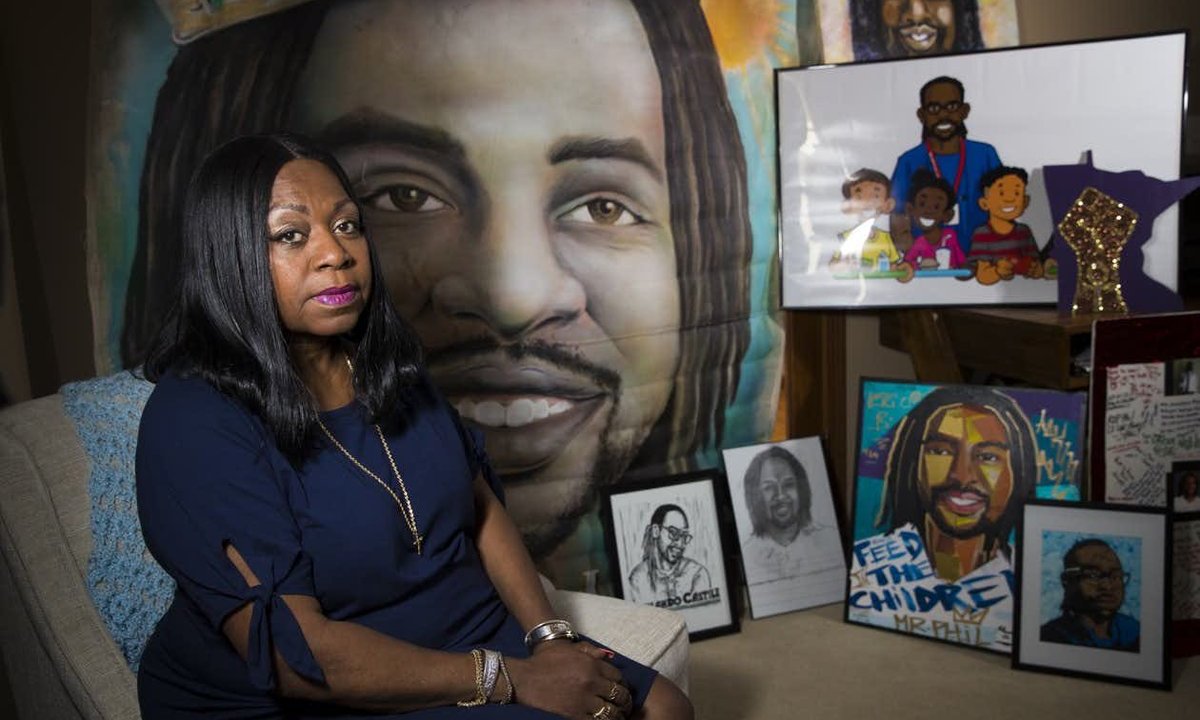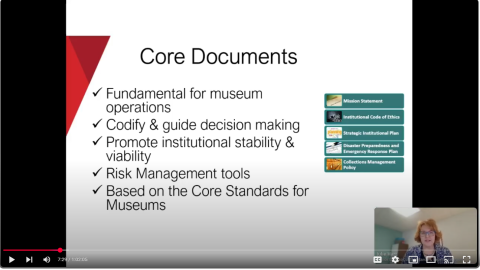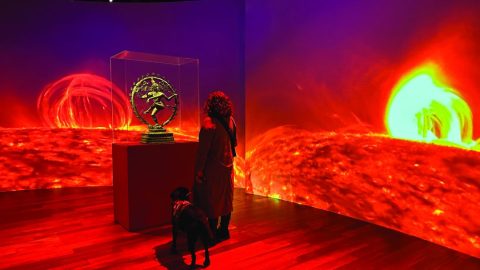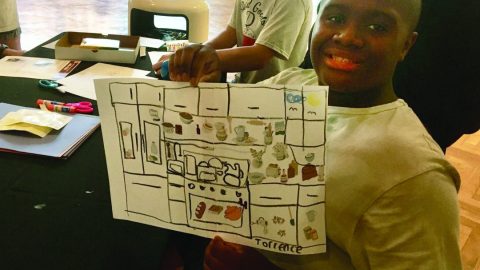
An art museum stepped out of its comfort zone to host an exhibition focused on healing in the aftermath of a local tragedy.
This article originally appeared in the March/April 2019 issue of Museum magazine, a benefit of membership with the Alliance.
In May 2017, Valerie Castile left a voicemail on the general line of Minneapolis Institute of Art (Mia). She wondered if the museum might be interested in an exhibition of artworks about her son, Philando.
The call was forwarded to the museum’s director, Kaywin Feldman, who immediately recognized the name. Philando Castile, a 32-year-old African-American man and beloved member of his community, had been killed by a police officer on July 6, 2016, during a traffic stop—just eight miles from the museum. The aftermath of the shooting—live-streamed by Philando’s girlfriend, Diamond Reynolds—had gone viral. Protests had rocked Minneapolis and St. Paul in the weeks following the tragedy. Together with the community, Mia staff also grieved. Some attended protests.
Others met informally to talk about what happened and to process their feelings. Feldman returned Valerie Castile’s call and found out that in weeks and months following Philando’s death, strangers came to her home to offer condolences and present her with artwork they had created to memorialize Philando. Soon, her walls and tabletops were crowded with these heartfelt expressions. In the depths of her grief, they provided comfort. She marveled that beauty was emerging from the devastation of her son’s death. Art was helping her, and she reasoned that the community, too, might find some solace in these works. Would Mia want to offer such an exhibition?
This wasn’t something Mia had ever done before. And as an institution that receives public funding, the museum could not take a political stand, especially with the court case against officer Jeronimo Yanez still pending. But, in the end, museum leadership decided to work with community members to hold “Art and Healing: In the Moment.” It was the right call.
A Changing Relationship with the Community
In recent years, Mia has focused on becoming more visitor-oriented. We have rewritten every label and panel in the institution to be more engaging and to foreground the intentions of the artist. We have installed Wi-Fi throughout the museum and comfortable seating areas with iPads so that visitors can peruse the collection and view special content about the objects on view. A free membership level has removed the financial barrier of joining the museum community.
At the same time, the museum is undertaking projects and exhibitions that increasingly tap into the public zeitgeist. A project organized by artist Andrea Carlson in 2016, “Let: an act of reverse incorporation,” offered alternative narratives about objects in the museum’s collection through labels authored by community members. It culminated with a procession of artists and community members carrying replicas of objects out of the museum, suggesting that the objects had a “life” beyond the museum context.
In the summer of 2017, artist-in-residence Aliza Niesenbaum embedded within predominantly Somali and Latino neighborhoods and produced large-scale group portraits that were displayed in the museum. These works empowered participants and visitors alike, providing an expanded sense of museum ownership and belonging.
Through these and many other projects, the community’s perception of what the museum is, and who it is for, has slowly transformed. The change has been so palpable that a reporter dubbed Mia “the people’s museum.” So, when Valerie Castile considered venues for an exhibition of works that honored her son, she thought of Mia.
Why We Needed to Do This
Nonetheless, Feldman’s decision to host this exhibition thrust the museum into uncharted territory. The typically long timeline for exhibition planning would need to be shortened, lest the museum seem insensitive to the urgency felt by the Castile family and confirm the perception of museums as detached from real-time concerns. The museum also needed to find a way to authentically present the material without appearing to benefit from this tragedy.
In addition, the museum’s staff felt under-equipped to respond to visitors’ emotional reactions given the senselessness of Philando’s death, the widely circulated video footage of his last moments, and the proximity (in time and space) of the terrible incident.
At the same time, Feldman had to navigate board members’ concerns that the exhibition was beyond the museum’s scope. And some museum colleagues questioned showing works by community-based artists rather than those with established reputations. One museum director said he would not mount such an exhibition because it was “outside of the canon.”
Yet, undertaking the exhibition felt like the right thing to do. In 2016, Mia had launched a three-year initiative known as MASS Action (Museum as Site for Social Action). Participants from museums across the nation came to Minneapolis to discuss the role and responsibility of museums in responding to the issues that affect communities locally and globally. They developed a toolkit of resources, including shared language, strategies to address inequity, and actions and exercises to build more inclusive museum practices.
When Valerie Castile called, the museum was also conducting preliminary discussions about the role that art might play in fostering empathy. Ultimately, through a grant from The Andrew W. Mellon Foundation, Mia established the Center of Empathy in the Visual Arts, wherein researchers, philosophers, content experts, artists, and thought leaders are grappling with how to make compassion and empathy a part of the museum’s learning strategies with the ultimate goal of fostering positive social change.
Considering these initiatives, walking away from an exhibition that might help the community navigate the pain, grief, and frustration precipitated by the death of Philando Castile seemed disingenuous.
Overcoming the Challenges
Embracing the fact that timeliness was more important than perfection, the museum created space on the exhibition calendar by shifting previously planned shows that were not locked down by contracts. We decided to hold the exhibition June 17 to July 29, 2018.
After meeting with Valerie Castile and making a preliminary selection of works to be included in the exhibition, we convened an advisory group of local community leaders, activists, and trauma counselors to co-create the exhibition with us to ensure that it would encompass multiple perspectives and counteract inherent biases. Working collaboratively, curator Nicole Soukup, Ms. Castile, museum educators and stakeholders, and the advisory group shaped the tenor of the exhibition.
Ultimately, the exhibition focused on the empathic response of the artists, who wanted to comfort Ms. Castile and honor Philando. “Art and Healing: In the Moment” underscored the therapeutic ability of the creative process and art’s role in helping people cope with trauma and loss. This message applied to all museum visitors, but we recognized from the beginning that the exhibition was intended particularly for the African American community—the group most affected by Philando’s loss and that of other African American men due to society’s negative perceptions and biases.
Even at the earliest stages, however, the museum acknowledged that this exhibition was not an indictment of law enforcement. Racism in this country is deep and systemic, but as Ms. Castile said, this does not mean that all police officers are evil; it means that we all need to work harder to acknowledge the impacts of these systems. Conversations with police chiefs in Minneapolis and St. Paul, as well as elected officials, helped amplify the exhibition’s message of recovery and healing in the aftermath of this trauma.
As planning for the exhibition proceeded, it became clear that staff members were struggling with their own feelings about the highly charged nature of the exhibition as well as with how they would effectively help visitors as they relived the pain and trauma. The museum held several discussion groups to help staff better understand the culture of white supremacy and how we might actively work against it. Trauma specialist Resmaa Menakem trained staff on how to respectfully acknowledge a visitor’s grief with humility, self-awareness, and personal vulnerability.
Through these conversations, it became clear that the museum needed to allow the space and time for a range of reactions to the works on view. Some visitors would be motivated to action—to overtly express the emotions the exhibition would evoke. To help them unpack these feelings, we provided a response wall with three prompts: “I remember…,” “I feel…,” “In the future, I will….” Visitors could affix their notes to the wall for others to read and consider.
For visitors who might want to recover or process more privately, we repurposed a nearby meeting room, outfitting it with soft lighting and comfortable furniture. “Healing ushers” (volunteers trained in trauma response) were positioned in the galleries during high-traffic times to support visitors in distress. Additionally, Mia hired an experienced community facilitator who organized a series of weekly healing circles and discussions on race and representation.
A Community Coming Together
The exhibition, announced largely through social media, opened on June 16, 2018, to hundreds of people. Members of the African American community told us it was cathartic that such an exhibition was taking place at all, let alone within an institution with a long history of perceived, and real, exclusion to them. The mayors of St. Paul (Melvin Carter) and Minneapolis (Jacob Frey) lamented the terrible loss that Philando’s death represented, but they also exhorted those gathered to work toward positive change as a way of honoring his memory.
A week later, Bryan Stevenson, founder and executive director of the Equal Justice Initiative, visited Mia and spoke about the necessity of “getting proximate” to our fellow human beings so that we might better understand and correct the misperceptions that divide us. He also spoke of the vital role that museums and other public institutions might play in furthering this discourse.
For all the fear and apprehension that plagued the planning process, no calamity befell the museum in the weeks that followed the opening. To the contrary, as community members came to the museum, many for the first time, they expressed gratitude that a civic institution was addressing this societal issue. They held us accountable for further exhibitions like this one, asking “What’s next?”
The great collections we hold in public trust will always be a rich source of information about the past, but this small exhibition demonstrated in a very big way that our institutions can play a greater role in the here and now. We need to be open to those opportunities.
Addressing Racism and Bias
As the Minneapolis Institute of Art planned “Art and Healing: In the Moment,” we learned the following things, which could help any institution looking to tackle issues related to racism and bias.
- Check your intentions. Be clear about why you are doing what you are doing, and for whom.
- Be accountable to your community. Make sure that those who were or are most impacted by the topic of the exhibition are at the center of planning it. Make decisions collaboratively, and transparently, with community members.
- Embrace new ways of working. Co-creation with community groups may require the museum to work in “flatter” (less hierarchical) ways. These new approaches might cause initial discomfort. Lean into that discomfort.
- Openly address white supremacy. As a staff, familiarize yourself with the characteristics of white supremacy culture, identify when they emerge, and actively work to develop antidotes against them.
- Take a restorative approach. The subject of “Art and Healing” caused harm to our community. Our actions needed to be caring above all. Be humble and show vulnerability.
- Prepare frontline staff. Staff will need training on how to bear witness to—and potentially help—visitors who are experiencing pain and reliving trauma.
- Facilitate processing. For exhibitions that require processing for both visitors and staff, allocate resources—time, space, money—accordingly.
- Stay open to feedback. After the exhibition opens, check in with stakeholders and visitors and be willing to make changes.
Matthew Welch is deputy director and chief curator at the Minneapolis Institute of Art.







